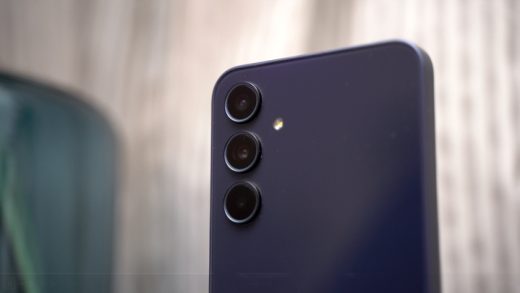Been in the boondocks for about a week now on a semi-vacation mode (and semi-retreat kind of way) so I’m not able to regularly publish new entries here. With a thousand miles away from mega Manila and a couple hundred more miles from the nearest city, my mountain resort hide-away is almost devoid of any internet coverage.
I’ve had some time to re-think the broadband issue I left behind in Metro Manila and have gotten a few more thoughts and ideas I’d like to share.

Broadband Internet as a Right vs. Privilege. If broadband internet becomes a “human rights” issue, does that mean that people in the boondocks and far-flung islands of the Philippines can “demand their right” and be provided with access to the internet where there is currently none? If that’s the case then I think the more important issue that NTC should look into is not the sub-standard speed of broadband internet but the utter lack of broadband coverage in many areas in the Philippines.
It’s like the poor people in Metro Manila protesting they are only able to eat 2 times a day when they should be able to eat thrice a day against the fact that people in far-flung areas have nothing to eat at all.
However, Government stepping into and regulating an industry does not always end well. Many other essential services like water, electricity, telephone have been privatized instead of nationalized. Even oil has been deregulated as well. I don’t believe in “big” governments.
Internet Coverage vs. Internet Speed. Faster broadband speed is always better. We always want our 2Mbps mobile 3G connection to be at its top speed.
Then again, if I were in the islands or in the middle of the jungle, I would care more about being able to access decent internet rather than thinking about downloading the latest episode of Fringe — I would not mind getting a steady 256Kbps line on my supposed 3Mbps mobile 3G connection as long as I get the connection. But that’s just me.
During the NBN ZTE scandal, I’ve read news reports that local telcos now cover 99% of the population of the Philippines in terms of internet connectivity (dial-up, DSL, and GPRS). That doesn’t mean though that the 99% of the area of the Philippines have internet access. It could be just the top 1,000 big islands that have coverage while the remaining 6,107 are still unreachable (while still representing the remaining 1% of the population).
Residential Broadband is Shared Resources. Many people do not know that the regular broadband internet they subscribe to is shared and not dedicated.
If you want a full dedicated line, you can get it via a “leased line”. That means the whole pipe is just dedicated to you alone. Not sure about local pricing but a 1Mbps leased line could fetch you up to $500 a month (this is an old price I knew a couple of years ago).
In a shared broadband environment, only a certain amount of bandwidth is provisioned. Say for every 20 subscribers, the ISP allocates around 1Mbps of dedicated pipe. The tricky part is how they can efficiently manage the provisioning so that all of the 20 subscribers still manage to experience the 1Mbps connection.
The fact is, no ISP anywhere in the world can afford to dedicate a full pipe for each subscribed speed — meaning, dedicate a 2Mbps line for a 2Mbps subscription.
Let’s take PLDT for example. In 2009, they generated a revenue of about Php13.9 billion in their broadband service from almost 1 million subscribers.
Let’s say each of the 1 million residents subscribed to only a 1Mbps connection. If PLDT allocates a dedicated 1Mbps (and not shared as it normally does) to each one, then it would need to “rent” out 1,000Gbps (1,000,000Mbps) of international pipes. If the going rate for a 1Mbps dedicated international pipe is $40 (this figure I got from small municipal ISPs renting out 1Mbps fiber pipes in some US states), then PLDT would need to pay international providers $40 million a month (roughly Php1.76 billion a month).
The annual fee it has to pay would be Php21.12 billion (way higher than the Php13.9 billion collections from subscribers). That does not count cost of operations, salary of over 5,000 employees, infrastructure, debt payments, etc.
We can now do a reverse calculation and see how much pipe we’re actually provisioned from these figures. Let’s say the total operating expenses, infra and salaries for the year is Php4 billion.
A typical business would make a 40 margin so that leaves Php8.34B from the Php13.9B gross revenue. Subtract Php4B of expenses from Php8.34B and they’re left with Php4.34B to pay for rent of international pipes.
Using the same $40 a month per 1Mbps dedicated pipe, Php8.34B will only allow for 394,000Mbps a year. If that 394,000Mbps is provisioned to 1 million subscribers, then each one would only get something like 394Kbps for their 1Mbps subscription.
That’s just how the ball rolls. How else can ISPs sell you a 1Mbps subscription for only Php999 a month if they pay their upstream providers $40 a month for the same speed?
Geography and Economics
Neighboring countries like Singapore and Hong Kong enjoy much faster internet speeds and at cheaper prices too. Why not the Philippines?
First, it’s geography. There are around 3.6 million broadband users in Singapore. In the Philippines, the estimate is 29 million but not all of them are broadband users (net cafe, office, school and dial-up users are included here). However, Singapore is only 683 square kilometers while the Philippines has 299,764 square kilometers of land. That’s 439 times bigger (size-wise) or at least 55 times more expensive to cover the same amount of people and be able to provide them with fiber connectivity.
Second, it’s economics. Despite the “internet” being a global commodity, local economics will still dictate supply and price points. Our electricity rate is among the highest in the world. Our taxes (10-35% + 12% VAT) is among the highest in the world. We have our share of very cheap services too — like SMS which is roughly Php8 in the US and only Php1 here.
There’s No Truth in Advertising
Have you tried eating at Mongolian Bowl with their eat-all-you can promo? I bet you can’t really eat all the meat that you want since they’ll put a cap on the amount of pork or chicken you put in each bowl.
Have you really tested if a drop of Joy liquid cleaner can really finish off 2 dozen dirty plates with just a single drop?
Have you accepted an invitation by a real estate sales agent to visit their site because they say you can own a house and lot for “only Php10,000” a month only to discover that the rate was for the monthly price of the 20% down-payment while the 80% is spot cash?
Aren’t we already familiar with the usual holiday sale that says “70% OFF (“up to”, in very small letters)”.
Do we all really believe in the advertising that we see on print, in billboards and on TV? To make matters worse, we never bothered to read the fine print when we sign service contracts. There’s no truth in advertising.
But here’s the clincher — ISPs have lawyers that make sure their ads and claims are protected from being considered scammy (or falsifying the public). The use of “up to X Mbps” and the fine print that indicates the Acceptable Use Policy are provisions that discloses the limitations of the service and liability of the provider.
To regulate or not to regulate; that is the question.
Government regulation is an iffy subject to discuss. So much more that we’re talking about the Philippine government here. If the government cannot even efficiently regulate its own offices and agencies, how much more the private sector? Most of the time, regulation can result to more bureaucracy and eventually corruption.
On the economics side, regulating the prices of a service or product does not always result into cheaper prices and/or better products. Just came back from NAIA3 and took a taxi home — there’s an LTFRB-approved airport taxi there that charges Php70 flag down and Php4 per 300meters. There’s another regulated taxi service that charges a fixed Php440 for a one way trip from the airport to Makati. The taxis aren’t even new (a ’95 Toyota Corolla). Now, that’s highway robbery. And to think the government is already involved in this “approved” rate.
Disclosure: My position is based on my personal experience running a couple of businesses (I own an internet cafe and a web hosting business for years) that is very similar to an ISP and as such have encountered, on many occasions, the same problems.

























again, it’s all about profit…
those telcos would not give a damn about our right as long as get large earnings at the end of the day and their subscribers suffering from their poor services.
If you read the brochure. It usually say something about, up to bandwidth(which is the advertized value) and a commit bandwidth(or something) which is much lesser than the advertized bandwidth.
If you think about it. I just means it can go up to x mbps, but always.
…..
Just visited PLDT’s website and… yes is says “up to”.
I think it’s just a trick strategy(not a lie) like the 999 price(looks cheaper because it’s just 3 digit, but it’s just one value short from thousand).
It says 3mbps but it’s just the max speed not the dedicated speed.
It really catches the eyes of the subscribers/consumers.
But really though this country needs to upgrade it’s IT infrastructure. Heck it need an upgrade in a lot of aspects.
@Lyle – if you read the fine print in your service contract and your telco’s AUP, you would have realized that the “unlimited” service has its limits.
Been to SG, Japan and S. Korea and the problem is the same. Customers there don’t get the promised 100Mbps they subscribed to. I think they only get somewhere between 40-60% (based on the many speed tests I tried in those countries) of the promised speed.
Um, if I were on a budget and decided to subscribe to an ISP because they said that for as low as X pesos a monthI would get as much as Y bandwidth, and it turns out they could only provide a tiny fraction of that bandwidth or none at all, I don’t believe my first thought would be, “At least 99% of the country has coverage!”
There is no such thing as a free lunch. Running an ISP costs money. We all get that. But that’s not the point.
It’s not like the consumers are asking for free internet access. They are simply demanding to get the services that they paid for. They were sold unlimited internet service, hence, they expect to get unlimited internet service.
The solution to the telco’s conundrum is simple:
Offer services that their infrastructure can support and don’t oversubscribe.
When the telco’s decided to offer unlimited internet plans, they dug their own graves.
This whole article about how “pipelines” cost money is superfluous. Any business venture costs money. It’s not the responsibility of the customer to worry about ROI and business feasibility.
On regulation eventually leading to corruption, that’s just conjecture. On the other hand, the very reason for the worldwide recession has been proven to be the result of lack of regulation of the stock market and the banking industry.
It may not always yield positive results but regulation is actually a good check and balance mechanism against abusive business practices.
Just an FYI, deregulation and privatizations are two different things.
Simply put…
When an industry such as the oil industry is deregulated, it simply means that the government will no longer dictate the price but instead allow free market forces (competition, demand, supply, etc) to determine prices.
Privatization, on the other hand, means the government sells its stake on a corporation it owns or controls. It has nothing to do with regulation.
The draft NTC memorandum order says nothing about pricing so I don’t see how, ” To Regulate or Not Regulate” becomes the question.
Kahit anong explanation pa ang gawin natin at mga magagandang words, UNLIMITED IS UNLIMITED meaning “NO LIMITS.”
Sa kikitain ng mga TELCOS???
Anong pake ng mga subscribers diyan? Eh nagoffer kayo ng hindi niyo kayang iprovide tapos sisihin niyo ang mga subscribers na kung may sariling line for example na 1Mbps ang mga subscribers eh lolobo ang cost ng mga TELCOS. In the first place, why offer a SERVICE THAT YOU CAN’T PROVIDE?
STOP FALSE ADVERTISING!!!
STOP TRICKING PEOPLE!!!
Why offer services you can’t provide???
Why offer speeds you can’t provide???
Why offer unlimited plans if you can’t deliver???
nice one… I wont be surprise if there are companies have their own representative in the congress and even in the senate!!!
All true!
Hope ISP’s can read this and hope for the better server after.
Why offer services you can’t provide???
Why offer speeds you can’t provide???
Why offer unlimited plans if you can’t deliver???
STOP FALSE ADVERTISING!!!
STOP TRICKING PEOPLE!!!
BE HONEST!!!
PUBLISH SPEEDS THAT YOU CAN ONLY PROVIDE!!!
DON’T SAY UNLIMITED IF YOU WANT TO LIMIT!!!
LAGAY NIYO LIMITED!!!
POINT DITO
BE HONEST!!!
WAG TAYONG MAGLOKOHAN!!!
KUNG ANO LANG ANG KAYA NIYONG IPROVIDE YUN LANG ANG SABIHIN PARA WALANG PROBLEMA SA MGA SUBSCRIBERS!!!
Kung sa simula pa lang sinabe niyo nang Limited ang Services niyo at kung 512Kbps lang ang kaya niyo iprovide at may 20GB cap then so be it. Atleast sa simula pa lang wala ng lokohan at ang maeexpect ng subsriber eh kung ano yung lang yung HONEST SPEED at HONEST USAGE NA AVAILABLE. Itigil na yang UNLIMTED SA MGA ADVERTISEMENTS at YANG MGA “UP TO UP TO” na mga SPEEDS para walang lokohan.
Great article Abe. This is actually a pressing issue. People don’t just use the net for entertainment alone.
…had these companies only advertised correctly about what should really be expected from these promos and connection speeds then this problem will really not be an issue. Coz if im paying for 1mbps but im getting an average of 700kbps then that situation is pretty much f*ck*d up and no one can just tell me that the line is shared between this and that and the servers and pipes are this and that and so that affects me as a consumer.. Hell, why promise a speed of 1mbps if the average is lower than that?! there is something wrong about that advertising.
I signed up and paid for this advertised speed now give that to me. I dont need to understand all these technical things and math.. tsk tsk.. it’s better if they just increase the prices and preserve the advertised speed rather than promise something that most of the time cannot be fulfilled.
Oh well, but I do hope the situation improves at least.
mabuhay si beerboy
if they advertise unlimited internet ….
and i paid for unlimited internet…
i should get unlimited internet at 1Mbps…
wala na ako pakialam kung kumita man sila o hindi…
may budget pa nga sila para sa promotions at commercials eh… paano mo sasabihing d sila kumikita noon. logic na lang po gamitin natin wag na muna math.. heheheh
Maybe the local companies here can investigate possible peering with other providers so that they can reduce their upstream costs. It’s what some companies in the US do to reduce their costs while increasing their available bandwidth.
@Meme: baka may senatong or tongressman dyan na pwedeng magpasa ng bill ng tulad sa europe
In some countries sa Europe, intenet access is part of their bill of righs. Malabo pa mangyaru dito sa Pilipinas un :(
i totally agree with beerboy
i got a globe wimax and nearest cellsite is about 500 meters away and i get a full signal but no data, huwwwaaattt????!!!! 5x na nagpunta ang mga tech nila pero wala pa din pagbabago, di ba nahihiya ang mga Globe executives sa palakad at serbisyo nila?
@Paul – I guess you can call it a rant. But let me sum up this article for you “ISPs should provide better/wider Internet coverage. If I subscribed to mobile 3G, I should get 3G signal most of the time and not GPRS/EDGE”.
I think the issue is advertising. FALSE advertising. Unlimited internet is not really unlimited. 1mbps and other connection speeds are not really that fast or even close to their promised speeds. So we need to look on how these companies market their products in a wrong way. It’s like FOOLING customers and promising them that they are paying for something like this and like that but the truth is they are NOT.
Just my thoughts.
I don’t get it. Was this article a rant? Because you didn’t get anywhere.
All I care about as a consumer is that if I pay 1k/month for a 1mbps unlimited internet connection, then most of the time I get my 1mbps unlimited internet connection. Is that too much to ask?
I’m not interested in the means of how they do it, much like I don’t look into how the electricity or water services work. I just want to get what I pay for.
Very good read.
I think it should be noted that at least NTC has been working on reaching a fair agreement (or compromise?) between the telcos and the consumers. That’s always a good start.
Let’s see how this issue will progress.